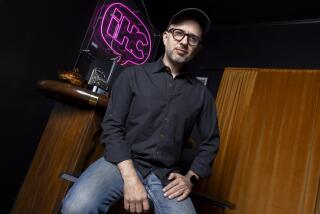A Dance to Lift the Spirit : Recital to Help Victims of Tragedy in Rwanda
- Share via
Growing up an exile in Burundi, Nola Kambanda said she was always at the top of her class. It was not the honor roll. It was a hit list.
“The other (high school) students would make lists of people they wanted to kill,” said Kambanda, who was born in Rwanda and lived in Burundi a few years after a failed Hutu rebellion in 1972 left 10,000 Tutsi and 150,000 Hutu dead. “They knew I was a Tutsi, so I was always first on the list of people to be killed.”
Now a student at Los Angeles City College, Kambanda, 22, performs traditional Rwandan dances at local cultural events with five other dancers from Rwanda, Uganda and Malawi. When the ethnic civil war resumed in Rwanda three months ago, she wondered how she could alert Southern Californians to the horrors and raise money to help the victims and their families.
Her answer: a $10-a-ticket rally, dance recital and fashion show, to be held at 1 p.m. Saturday at Santa Monica College. Kambanda and her fellow dancers will perform, actor Danny Glover will speak and ABC News correspondent Larry Carroll will emcee.
“It seems people (here) are not aware. And the international community has refused to call it genocide, so no one is helping us,” said Kambanda.
The hardest part of planning the event, she said, was staying focused on daily life while worrying about loved ones in Rwanda, where relief agencies estimate that 200,000 to 500,000 people have been killed.
“We (dancers) all had finals to study for,” said Kambanda, who is studying engineering and computer science.
“But then, we all have lost family. I have first cousins who have been killed. Another girl . . . lost her sister. And we all have family still not accounted for. It’s difficult trying to find out who has been killed and who wasn’t.”
Helping the cause is Ghanaian-born Akosua Busia, who met Kambanda while she was emceeing a beauty pageant last year. Busia, a writer and actress who had a role in “The Color Purple,” said she wanted to help Kambanda because she admired the student’s stand-alone spirit.
“When they started the planning, they didn’t have anyone helping them out,” Busia said. She contacted Carroll and Glover.
It was Busia’s idea to have some of the dancers speak during the show about the pain and anger of losing family to the ethnic warfare in their homeland.
“When you hear of mass numbers of people dying in a remote place you have never heard of, it’s hard to relate,” she said.
Rwanda, once an independent kingdom, became a part of German East Africa in 1899 and fell under Belgian rule in 1916. The Belgians educated the Tutsis, an ethnic group known for their height, who became the elite of Rwandan society. The Hutus, stockier and shorter, made up 90% of Rwanda’s population and resented the Tutsis’ domination.
Rwanda gained independence in 1962, but the ethnic friction continued.
“After these countries gained independence, we had leaders who exploited the ethnic rivalries for their own good,” said Segun Oyekunle, an editor at The African Times, a Los Angeles-based newspaper that reports on the African Diaspora.
A mysterious plane crash in April killed Rwanda’s president, a Hutu, and Burundi’s president as well. “The Hutu reacted, thinking the Tutsi were responsible for the plane crash,” said Oyekunle. “As a result, we have all this carnage.”
While the blood bath has been well-documented, relief money is limited, said Neil Frame, a procurement director for Operation USA, one of the few local relief organizations active in Rwanda.
Frame, whose organization will benefit from the fund-raiser, said public response to the crisis in Rwanda “has been underwhelming.”
“We received $10,000 from an Australian group, $1,000 from the Liberty Hill Foundation (a Santa Monica-based community funding organization) and $100 from the general public,” he said.
Critical to the relief effort is medical supplies. Frame said his group has collected about 22 tons that will be flown to Burundi and distributed to Rwandan refugees in that country, and to Tanzania, where about 437,000 Rwandans have fled, according to Refugees International, a fact-finding group.
Meanwhile, Frame said, another crisis is waiting in the wings.
“People are being displaced from the areas where they buy or raise food. Famine is caused by the displacement of people. They become reliant on relief agencies for food, and it becomes a vicious cycle. And when they congregate in places where they think they can find food, it makes them more vulnerable to attack,” he said.
Food, shelter and portable water, he said, are needed most. The U.N. High Commissioner for Refugees last month appealed for $56.7 million for three months’ worth of gas, food, administrative costs and relief supplies.
Performing the traditional dance of her country to help raise money may also diminish the perception that Rwanda is no more than a blood-soaked land of horrors, Kambanda said.
“The dance is so beautiful,” she said. “We want to show people there is more to our culture than ethnic tensions and people killing other people.”
More to Read
Sign up for Essential California
The most important California stories and recommendations in your inbox every morning.
You may occasionally receive promotional content from the Los Angeles Times.










